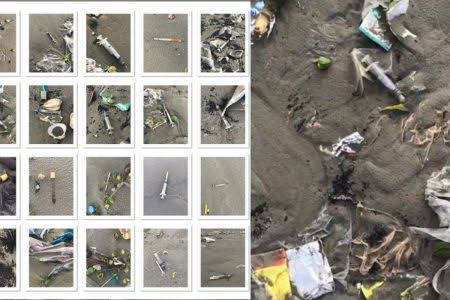
Clinical Waste – Every Hospital’s Responsibility
On September 3, 2019, Shaniera Akram, wife of cricketer Wasim Akram, posted on her social media platforms calling for attention towards Clifton beach in Karachi.
In her post, Shaniera declared the beach under a state of emergency as biohazardous waste was found at the shore, acting as a threat to the community. While it has not been known who is responsible for the disposal of the waste, it is important to know how this waste should be treated by hospitals themselves.
Hospital facilities are expected to maintain the highest standards of cleanliness and hygiene, but what we don’t consider is that these same hospitals are also the hub of infection as blood, body fluids and consumables of infectious patients are also a source of disease transmission.
It is the hospitals’ responsibility to ensure the waste material of clinical treatment is handled carefully in the ward, during storage and even after it leaves the facility, so it does not pose a risk of infecting others.
Related: The Challenges Of Medical Error Reporting In Pakistan
Clinical waste, which is biohazardous, is generated from all areas of the hospital. Used bandages and injection syringes from patient wards, blood and body parts from the Operation Theatre and used blood collection tubes from the laboratory are all types of clinical waste and have to be disposed correctly as per national and international guidelines.
Hospitals are instructed to use color-coded garbage bags to separate clinical and non-clinical waste. Non-clinical waste which is mainly paper, plastic and food items can be recycled or disposed in local waste collection bins, but clinical waste handling has to follow specific guidelines:
-
All staff should be able to identify the different types of clinical waste
Proper waste management begins with segregation in which all hospital staff (from doctors to housekeeping staff) is able to identify the different categories of clinical waste and is aware of which color bag to use for disposal.
If hospital staff is not trained appropriately, clinical waste may be thrown away like kitchen garbage and may eventually find its way to local community garbage bins.
-
Sharp items should be disposed in puncture proof containers
Any sharp item, whether a needle or broken glass, has the potential to injure and infect whoever is collecting or transporting the waste material. Puncture-proof, sealable containers should be present in all wards of healthcare facilities so that used needles are immediately placed in these Danger Boxes instead of plastic bags which can easily be ripped by a sharp object.
-
Staff should wear personal protective equipment while handling clinical waste
Staff handling the clinical waste are at a high risk of getting exposed to infectious agents and should use protective gear like heavy duty gloves, boots, gowns and masks to prevent any accidental injury.
-
Clinical waste storage areas should be secure
Although clinical waste should be disposed as soon as possible, it may be stored temporarily in designated areas within the hospital premises, which are ventilated and kept cool and dry. If these areas are not kept locked at all times, scavengers may locate this clinical waste and sell these used medical items to drug dealers and illegal practitioners.
-
Clinical waste should be incinerated by a certified agency
The final destination of clinical waste should be incineration as burning the material at high temperatures is a safe and effective way of eliminating the risk completely. Few hospitals in Karachi have in-house incinerators but others can outsource this service to government agencies like the Karachi Metropolitan Corporation, which regularly collect clinical waste for incineration.
The above regulations are mainly for solid waste while regulations for liquid waste, chemical waste and radioactive waste have separate protocols developed to neutralize the waste and prevent spread of health risks within the community.
If waste management policies aren’t followed and monitored, hospital waste, like house-hold waste, may be dumped into side alleys, empty plots or open sewers. Improper disposal may result in spread of disease within the community, either by intentional reselling of clinical waste or unintentional injuries during a visit to the playground, the park or the beach.

